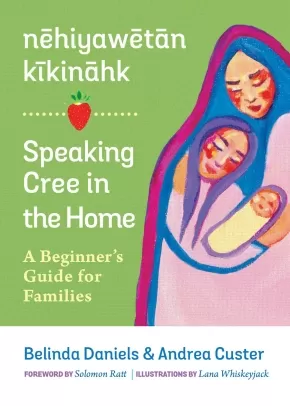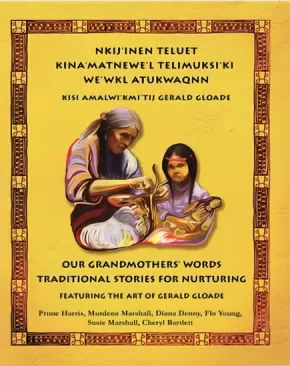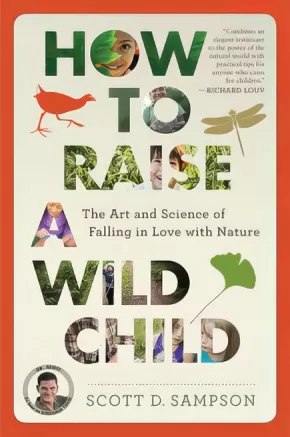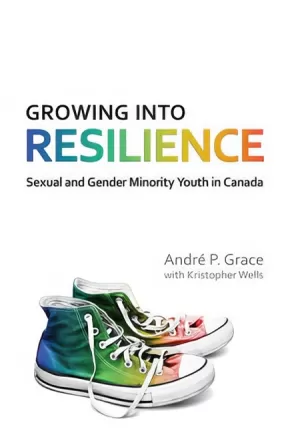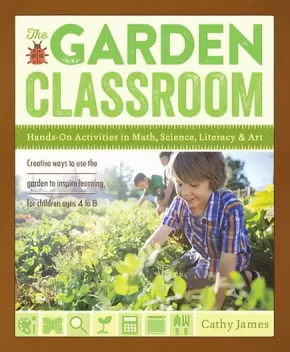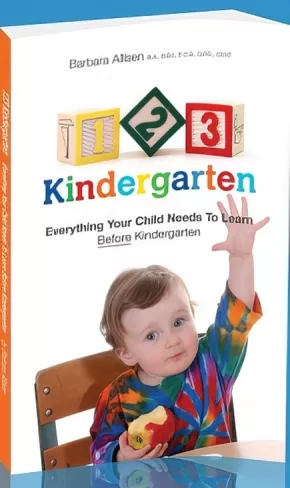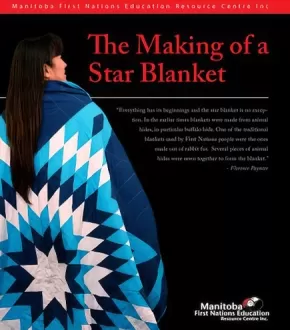
Parent Resources
1
-
13
of
13 Results;
Sort By
nēhiyawētān kīkināhk / Speaking Cree in the Home
$19.95
Artists:
Format:
Paperback
Text Content Territories:
Indigenous Canadian; First Nations; Cree (Nehiyawak);
Reading Level: N/A
ISBN / Barcode: 9780889779006
Synopsis:
Synopsis:
A hands-on guide for parents and caregivers to develop best practices in revitalizing and teaching Cree to young children.
In nēhiyawētān kīkināhk / Speaking Cree in the Home, Belinda Daniels and Andrea Custer provide an introductory text to help families immerse themselves, their children, and their homes in nēhiyawēwin—the Cree language.
Despite the colonial attacks on Cree culture, language, and peoples, Custer and Daniels remind readers that the traditional ways of knowing and transferring knowledge to younger generations have not been lost and can be revived in the home, around the table, every day.
nēhiyawētān kīkināhk / Speaking Cree in the Home is an approachable, hands-on manual that helps to re-forge connections between identity, language, family, and community—by centering Indigenous knowledge and providing Cree learners and speakers with a practical guide to begin their own journey of reclaiming and revitalizing Cree in the home.
Readers are guided through methods for language learning, the basics of reading Cree and Standard Roman Orthography, pronunciation of vowels, engaging language-learning games, and examples of high-frequency words and phrases that can easily be incorporated into daily routines and taught to children young and old.
Reviews
“This is a welcome book for all who are interested in learning the Cree language, either for themselves alone or for themselves and their families. The book offers good guidance on the best practices in language learning based on the authors’ personal experiences in their respective language journeys.” —Solomon Ratt, author of mâci-nêhiyawêwin / Beginning Cree
“A major contribution, this book will be a useful resource in Cree classes, at both high school and university levels. But it is also useful for home use, as it describes the practical application of speaking Cree in the home and provides in an easy-to-read format and details a hands-on approach too.” —Dorothy Thunder (Plains Cree, Little Pine First Nation), Faculty of Native Studies, University of Alberta
“The activity-based learning lessons that are presented here should serve as a model not only for teaching the language in a family setting, but in any other formal and informal settings, because they cover all aspects of teaching and learning; the content, variety of methods, appropriate timing and setting. . . . The pioneering in Cree language acquisition and revival has begun and hopefully this book reaches all interested individuals.” —Ken Paupanekis, author of Pocket Cree: A Phrasebook for Nearly All Occasions
Additional Information
122 pages | 4.72" x 7.27" | Paperback
Nkij'inen Teluet / Our Grandmothers' Words : Traditional Stories For Nurturing
$14.95
Format:
Paperback
Text Content Territories:
Indigenous Canadian; First Nations; Mi'kmaq;
ISBN / Barcode: 9781774710869
Synopsis:
Synopsis:
Through traditional stories, Grandmothers' understandings guide and nurture parents and children as they grow together.
Sali'j is a Mi'kmaw woman. She is strong, she is happy. Happy to be part of a loving family, happy to be Mi'kmaq. She begins to notice changes to her body, subtle at first, then more noticeable. She realizes that she is pregnant. She and her husband rejoice to think of welcoming a child into their lives. She goes to her Mother, to her Grandmother, to her Godmother. She tells them she is pregnant. They hug her in joy.
They gather their knowledge and their wisdom from teachings passed down from woman to woman, over the generations; they share this knowledge, little by little, story by story. This is the Mi'kmaw way.
Educator Information
Dual-language: English and Mi'kmaq.
This book is created by Prune Harris from the words and wisdom of four Grandmothers from the Mi’kmaw Nation of Eskasoni. They are Diana Denny, Murdena Marshall, Susie Marshall and Veronica (Flo) Young.
Additional Information
64 pages | Paperback
Forty Fathers: Men Talk about Parenting
$34.95
Format:
Hardcover
Text Content Territories:
Indigenous Canadian;
ISBN / Barcode: 9781771622431
Synopsis:
Synopsis:
Forty Canadian fathers, from the prime minister to prominent athletes and artists, reflect on their unique parenting challenges and accomplishments.
When Tessa Lloyd’s sons-in-law became fathers, she searched for resources that would help inspire them—especially parenting stories from other fathers. However, that book didn’t seem to exist. As a counsellor for children and families, Lloyd understood the ways a father-child relationship can have a lasting effect through the generations. Seeing a need, Lloyd decided to gather these stories herself.
This resulting volume collects the stories and portraits of forty Canadian fathers who open up about both their own fathers and their deeply personal parenting experiences. This diverse group includes Prime Minister Justin Trudeau, writer Lawrence Hill, academic Niigaan Sinclair, athlete Trevor Linden, restaurateur Vikram Vij, anthropologist Wade Davis, musician Alan Doyle, artist Robert Bateman and philanthropist Rick Hansen. The contributors reflect on their varied parenting experiences and challenges, including parenting while incarcerated, parenting across cultural barriers, parenting through divorce, parenting while transgender, parenting as a celebrity and parenting with a disability. Many common themes emerge throughout the stories, including the process of overcoming cultural messages that encourage men to be strong, authoritarian and emotionally unavailable.
The stories are extraordinarily candid and vulnerable, as the fathers describe their own failings, regrets and childhood traumas, as well as the humbling process of trying to do better. In one anecdote, Dr. Greg Wells describes the experience of meeting another father walking the empty streets at three a.m. with an infant, and how that moment of shared recognition gave him strength at a difficult time. The stories in this book offer a similar glimpse into the shared experiences and trials of fatherhood, but also offer fascinating reflections on the more universal experiences of finding one’s place within a family and striving to be a better person for the sake of others.
Additional Information
320 pages | 6.30" x 9.25" | 80 B&W Photographs
Authenticity Note: This work has received the Authentic Indigenous Text label because of the Indigenous contributions to this work. Not all contributions are from Indigenous people, though. It is up to readers to determine if this work is suitable for their purposes.
Nature-Based Therapy: A Practitioner's Guide to Working Outdoors with Children, Youth, and Families
$34.99
Format:
Paperback
ISBN / Barcode: 9780865719132
Synopsis:
Synopsis:
Take your therapeutic practice with children, youth, and families out into nature.
The number of children, youth, and families seeking help for a wide range of mental health concerns is growing at an alarming rate, and many struggle to thrive despite well-intentioned interventions from skilled helpers. Unplugging from technology and reconnecting with the web of life is a powerful antidote to the highly technological and fast-paced realities of so many.
Nature-Based Therapy addresses this underlying disconnection between humans and their ecological home, exploring theories and therapeutic practices undertaken with children, youth, and families, including:
- Developing sensory awareness of outer and inner landscapes
- Navigating risk in play
- Case examples with a diverse range of settings, intentions, and interventions.
Nature-Based Therapy is for counselors, therapists, youth and social workers, educators, and parents working in educational and therapeutic settings who want to take their practice beyond the office walls and into the powerful terrain of the wild, partnering with nature as a co-facilitator to create lasting change.
Additional Information
304 pages | 6.00" x 9.00"
Listening to the Beat of Our Drum
$29.95
Editors:
Format:
Paperback
Text Content Territories:
Indigenous Canadian;
Grade Levels: University/College;
ISBN / Barcode: 9781772581065
Synopsis:
Synopsis:
Listening to the Beat of Our Drum: Indigenous Parenting in a Contemporary Society is a collection of stories, inspired by a wealth of experiences across space and time from a kokum, an auntie, two-spirit parents, a Métis mother, a Tlinglit/Anishnabe Métis mother and an allied feminist mother. This book is born out of the need to share experiences and story. Storytelling is one of the most powerful forms of passing on teachings and values that we have in our Indigenous communities. This book weaves personal stories to explore mothering practices and examines historical contexts and underpinnings that contribute to contemporary parenting practices. We share our stories with the hope that it will resonate with readers whether they are in the classroom or in the community. Like our contributors, we are from all walks of life, sharing diverse perspectives about mothering whether it be as a mother, auntie, kokum or other adopted role.
Additional Information
125 pages | 5.80" x 8.90"
How to Raise a Wild Child
$21.00
Format:
Paperback
Grade Levels: University/College;
ISBN / Barcode: 9780544705296
Synopsis:
Synopsis:
From the beloved host of PBS Kids’ Dinosaur Train, an easy-to-use guide for parents, teachers, and others looking to foster a strong connection between children and nature, complete with engaging activities, troubleshooting advice, and much more
This timely, significant work carries a far-reaching message for families and the planet."-Publishers Weekly
"In a time when the connection between humans and the rest of nature is most vulnerable, Scott offers parents and teachers a book of encouragement and knowledge, and to children, the priceless gift of wonder."-Richard Louv, author of Last Child in the Woods and The Nature Principle
The average North American child now spends about seven hours a day staring at screens and mere minutes engaged in unstructured play outdoors. Yet recent research indicates that experiences in nature are essential for healthy growth. Regular exposure to nature can help relieve stress, depression, and attention deficits. It can reduce bullying, combat obesity, and boost academic scores. Most critical of all, abundant time in natural settings seems to yield long-term benefits in kids' cognitive, emotional, and social development. How to Raise a Wild Child is a timely and engaging antidote, offering teachers, parents, and other caregivers the necessary tools to engender a meaningful, lasting connection between children and the natural world.
"With wisdom, intellect, and empathy, [Sampson] provides us with a bounty of simple yet profound ways we can enter this natural world, oftentimes starting in our very own backyards."-Lili Taylor, actor, mom, and board member of the American Birding Association
"[Sampson] makes a cogent case for the importance of cultivating a 'nature connection' in children and offers thoughtful guidance on how to do so amid today's pressures of hectic, high-tech, increasingly urbanized life."- Scientific American MIND
Growing into Resilience: Sexual and Gender Minority Youth in Canada
$38.95
Format:
Paperback
Grade Levels: University/College;
ISBN / Barcode: 9781442629042
Synopsis:
Synopsis:
Despite recent progress in civil rights for sexual and gender minorities (SGM), ensuring SGM youth experience fairness, justice, inclusion, safety, and security in their schools and communities remains an ongoing challenge. In Growing into Resilience, André P. Grace and Kristopher Wells – co-founders of Camp fYrefly, a summer leadership camp for SGM youth – investigate how teachers, healthcare workers, and other professionals can help SGM youth build the human and material assets that will empower them to be happy, healthy, and resilient.
Grace and Wells investigate the comprehensive (physical, mental, and sexual) health of SGM youth, emphasizing the role of caring professionals in an approach that that recognizes and accommodates SGM youth. Throughout, the authors draw upon the personal narratives of SGM youth, emphasizing how research, policy, and practice must act together for them to be able to thrive and fulfill their promise.
Both a resource for those professionally engaged in work with sexual and gender minorities and a comprehensive text for use in courses on working with vulnerable youth populations, Growing into Resilience is a timely and transdisciplinary book.
The Garden Classroom: Hands-On Activities in Math, Science, Literacy, and Art
$28.95
Format:
Paperback
ISBN / Barcode: 9781611801644
Synopsis:
Synopsis:
Creative ways to use the garden to inspire learning, for kids ages 4-8
Packed with garden-based activities that promote science, math, reading, writing, imaginative play, and arts and crafts, The Garden Classroom offers a whole year of outdoor play and learning ideas—however big or small your garden.
Every garden offers children a rich, sensory playground, full of interesting things to discover and learn about. There's a whole lot of science happening right before their eyes. The garden can also be a place to develop math and literacy skills, as the outdoors offers up plenty of invitations to weave learning into everyday gardening. The garden classroom is a place where plants grow, and where children grow too.
Additional Information
232 pages | 7.02" x 8.50" | Paperback
Bullied: What Every Parent, Teacher, and Kid Needs to Know About Ending the Cycle of Fear
$21.99
Format:
Paperback
ISBN / Barcode: 9780062105080
Synopsis:
Synopsis:
Winner of National Parenting Publications Award and Mom's Choice Award!
Everybody knows how it feels to be ostracized, isolated or taunted, but most of us are at a loss when it comes to knowing how to make it better. In Carrie Goldman's groundbreaking book, Bullied, she offers concrete solutions for parents, teachers, and kids on how to effectively respond to painful situations—whether it is normal social conflict or more serious bullying.
Goldman's warm, engaging style combines the real-life stories of bullies, victims, bystanders, and their parents with the most cutting edge scientific research to provide a thorough analysis of cruelty in our culture. She explores how the pop culture permeates homes and schools, often impacting the way kids view those who are different from the accepted norm.
Bullied comprehensively addresses issues such as:
- The media's influence on aggression and bullying
- How to prevent cyberbullying, or how to manage cyberbullying once it has begun
- How to safely shift from being a bystander into a witness or an ally
- Effects of bullying on the brain, both for bullies and for victims
- Steps to take with the school if you are being bullied or sexually harassed
- A comprehensive look at restorative justice as a non-punitive response to bullying
- Techniques to help you deal with verbal taunting in the moment it is happening
- Identifying the difference between normal social drama and bullying
- Knowing when to ask for help and how to access effective help
The mother of a bullied first grader, Goldman's inspiring true story triggered an outpouring of support from online communities around the world. Bullied is a research-based book born from Goldman's blog post about the ridicule her daughter suffered for bringing a Star Wars thermos to school—a story that went viral on Facebook and Twitter before exploding everywhere, from CNN.com and Yahoo.com to sites all around the world. More than 200 people were interviewed for the book, including parents, teachers, kids, social workers, authors, celebrities, researchers, psychologists, actors, actresses, and school administrators. It is a wealth of knowledge packaged in a fascinating read.
Moving Forward, Giving Back (2 in Stock) - ON SALE!
$20.00 $26.95
Format:
Paperback
Text Content Territories:
Indigenous Canadian;
ISBN / Barcode: 9781552665572
Synopsis:
Synopsis:
Aboriginal people who choose to improve their education as adults often face many challenges, most of which arise from the ongoing impact of colonialism and of racialized poverty. Yet in Winnipeg’s low-income inner city, a variety of innovative and effective Aboriginal adult education initiatives have emerged. Drawing upon the voices and experiences of Aboriginal adult learners themselves, this book describes the initiatives and strategies that have proven successful and transformative for adult Aboriginal students.
These programs also positively influence the lives of the students’ families and are even felt on the community level, functioning as anti-poverty initiatives. Moving Forward, Giving Back posits that effective Aboriginal adult education initiatives need to be dramatically expanded to improve the health and vibrancy of Aboriginal people and communities across Canada.
Additional Information
168 pages | 6.00" x 9.00"
1 2 3 Kindergarten
$14.95
Format:
Paperback
Grade Levels: Kindergarten;
ISBN / Barcode: 9781466480391
Synopsis:
Synopsis:
1 2 3 Kindergarten is a down-to-earth, practical guide to help parents, caregivers and educators ensure children's readiness for kindergarten. Written by a kindergarten teacher and parent, this award-winning book, has tips, explanations, short-cuts and fun. It includes ideas that use resources already available at home or in child care centers and strategies to incorporate learning time into busy, active days. An easy-to-use developmental checklist and rating scale, guidance for the this-year-or-next-year debate, and suggestions for home-school transition make this a birth-to-kindergarten resource.
Additional Information
114 pages | 5.98" x 9.02" | Paperback
The Making of a Star Blanket
$8.00
Format:
Paperback
Text Content Territories:
Indigenous Canadian;
ISBN / Barcode: 9780978080846
Synopsis:
Synopsis:
This resource provides an opportunity for students to work with paper and colour, while integrating the concept of numbers into the learning and teaching process. The hands-on experience of being able to fold paper into different shapes, patterns and designs, and add colour is an effective strategy to motivate students to learn math. The section, “The Star Blanket Making Process From the Sewing Perspective,” shows a step-by-step progression of how to assemble a star blanket. Not only does it teach practical skills, it also teaches patience and builds positive self-esteem within the learner.
Educator Information
While the publisher of this work indicates it's a useful math resource, it has been expressed by educators that this is not a useful math resource.
Native American Gardening: Stories, Projects, and Recipes for Families
$41.44
Format:
Paperback
Text Content Territories:
Indigenous American; Native American;
Reading Level: N/A
ISBN / Barcode: 9781555911485
Synopsis:
Synopsis:
Learn how to plan and prepare a garden site, celebrate the harvest, create traditional gardens, such as the "˜Three Sisters Garden" of corn, beans, and squash, and make Native American crafts such as gourd rattles and corn husk dolls, and use its many recipes to cook Native meals.
Additional Information
176 pages | 1.11" x 1.11"
Sort By

